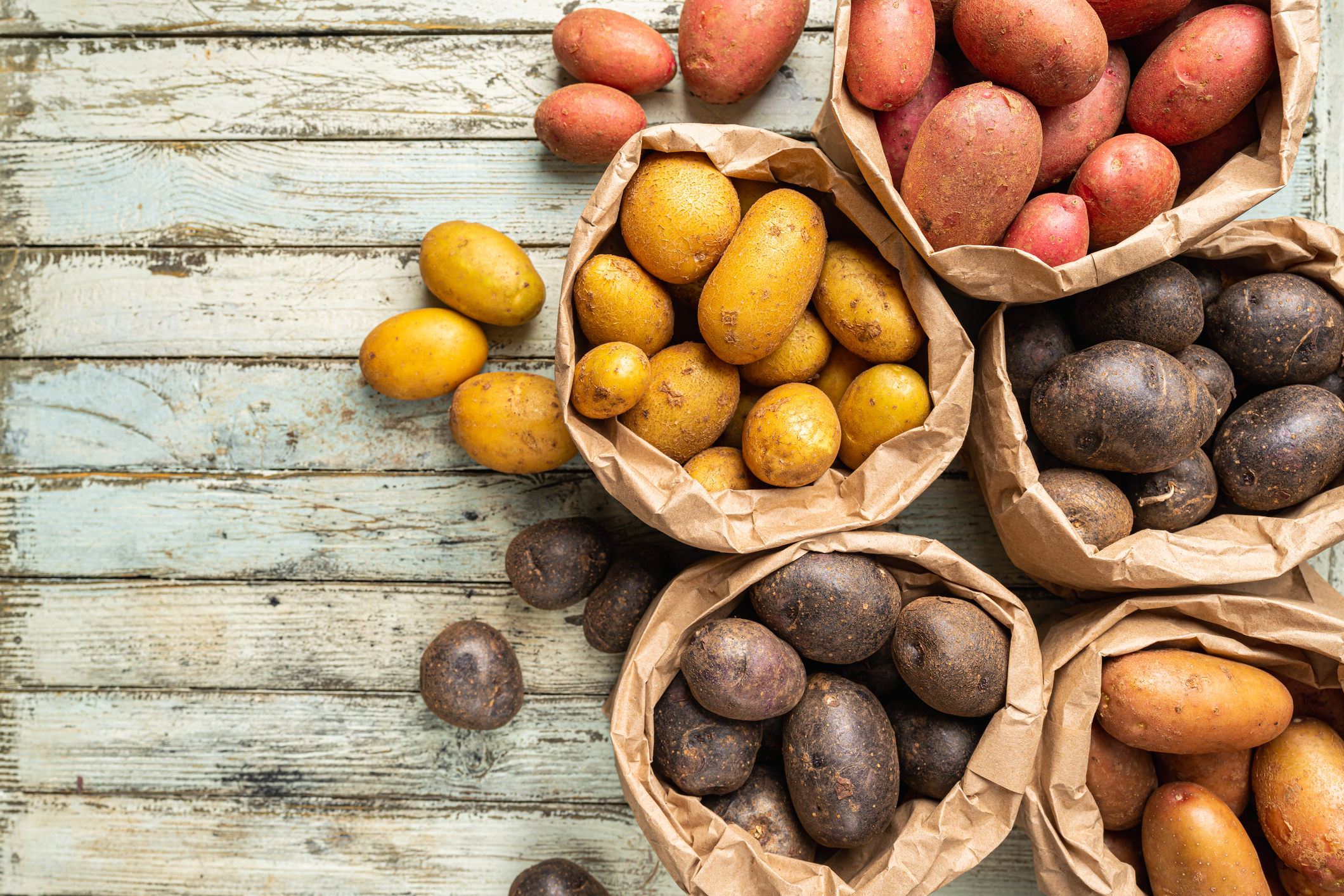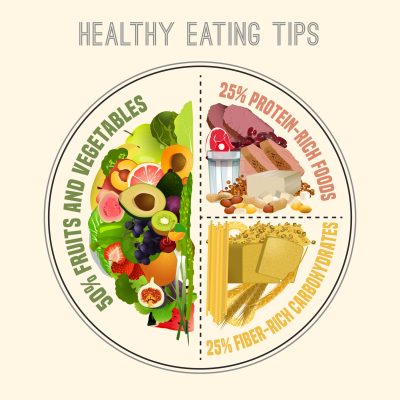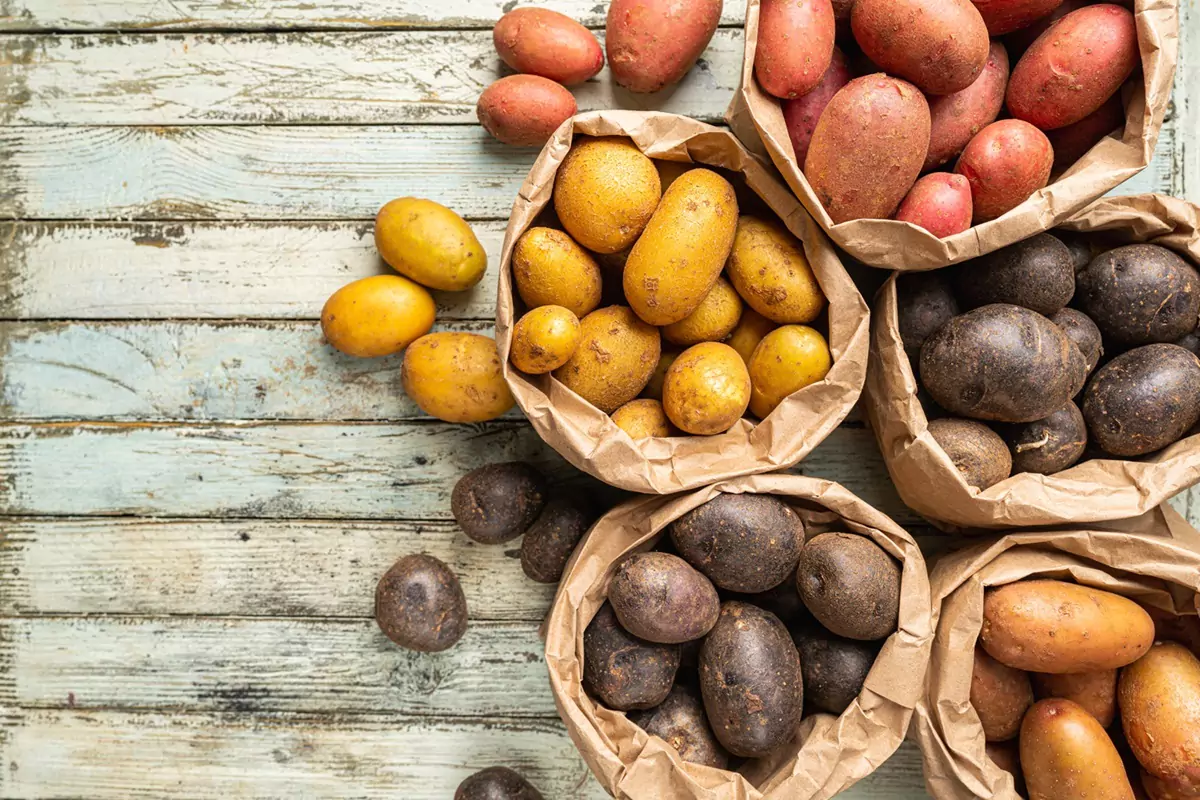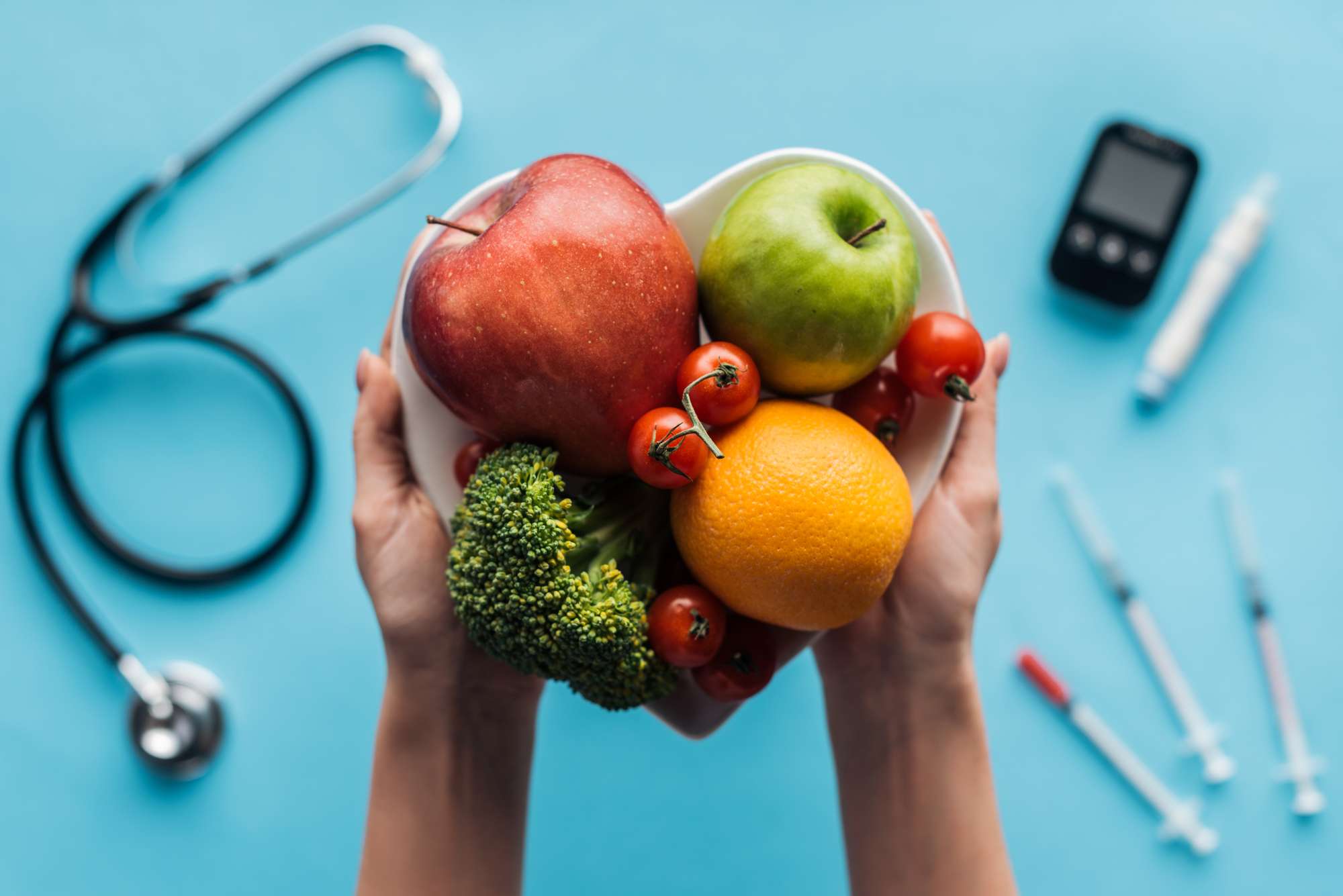DISCOUNT: UP TO 90% OFF






Potatoes And Diabetes: Can Diabetics Eat Potatoes?


Table of Contents
- Are Potatoes Bad for Diabetics?
- The Glycemic Index of Potatoes
- How Potatoes Affect Blood Sugar Levels
- Do Potatoes Raise Blood Sugar?
- Potatoes and Glucose
- The Role of Carbohydrates
- Are Potatoes Good for Diabetics?
- Health Benefits of Potatoes
- The Importance of Portion Control
- How Much Potatoes Can a Diabetic Eat?
- Creating a Balanced Diet
- How to Measure Portions
- Best Potatoes for Diabetics
- Comparing Different Types of Potatoes
- Sweet Potatoes vs. White Potatoes
- SugarMD Super Berberine
- How to Cook Potatoes for Diabetics
- Cooking Methods and their Impact
- Healthy Potato Recipes for Diabetics
- Mashed Potatoes for Diabetics
- Is Boiled Potato Good for Diabetes?
- Nutrient Retention in Boiled Potatoes
- Potatoes and Type 2 Diabetes - Final Verdict
- Frequently Asked Questions
- 1. What kind of potatoes can diabetics eat?
- 2. Are boiled potatoes suitable for diabetics?
- 3. How can diabetics enjoy mashed potatoes?
- 4. Do potatoes significantly raise blood sugar levels?
- 5. What is the role of portion control in eating potatoes for diabetics?
- About The Author
Life throws myriad questions at us every day but for people living with diabetes there's one that stirs up more intrigue than most: "Can diabetics eat potatoes?" This isn't a trifling culinary inquiry. Rather, it's a life-altering dietary dilemma that echoes through the daily existence of those grappling with fluctuating blood sugar levels. On one hand, you have the humble potato - the ever-reliable, versatile vegetable, a mainstay in households across the globe.
It's the crispy hash brown that brightens up your breakfast the warm, comforting mashed potato that accompanies your dinner and the crispy fries that bring joy to your snack times. From the sandy soils of Idaho to the terraced highlands of the Andes the potato has nestled its way into our meals and our hearts. However, for those living with diabetes, this seemingly innocuous tuber might appear as a wolf in sheep's clothing.
Nestled within its starchy flesh lies the potential to cause sugar levels to soar, prompting an agonizing conundrum: to eat or not to eat? At the crux of this debate are complex dynamics involving the glycemic index, cooking techniques, portion sizes and the inherent nutritional profile of potatoes. The potato finds itself on trial, with mounting evidence both for and against its role on the plate of someone with diabetes.
As we navigate this exciting exploration, we will be sifting through the facts, debunking the myths and providing practical, evidence-based advice. Join us as we delve into the captivating narrative of potatoes in the world of diabetes. The answer isn't as clear-cut as a neatly diced spud; rather, it's a multifaceted puzzle waiting to be solved. So, pull up a seat at the table as we answer the burning question: "Can diabetics eat potatoes?"
Are Potatoes Bad for Diabetics?
When asking if potatoes are bad for diabetics the conversation inevitably turns towards a concept central to diabetes management: the Glycemic Index (GI).
The Glycemic Index of Potatoes
To understand why the role of potatoes in a diabetic diet is contentious, we must first unpack what the Glycemic Index is. In its most basic form the Glycemic Index is a ranking system for carbohydrates. It measures how quickly certain foods cause blood glucose levels to rise after being eaten. Picture this ranking system as a scale, starting from zero and ending at 100.
Foods with a high GI (70 or above) cause a more rapid increase in blood sugar levels as they are quickly digested and absorbed into the bloodstream. These foods can trigger a 'spike' in blood sugar levels which can be problematic for individuals with diabetes who struggle to regulate their glucose levels. In contrast, low-GI foods (55 or below) are digested and absorbed at a slower pace, providing a more gradual, sustained release of energy.
This helps to keep blood glucose levels more stable, avoiding the sharp spikes and crashes associated with high-GI foods. Unfortunately, most potatoes have a high GI, particularly when boiled or baked. The average boiled white potato, for instance, has a GI of around 78. This places potatoes in the higher end of the Glycemic Index, alongside foods like white bread and instant oatmeal.
How Potatoes Affect Blood Sugar Levels
Potatoes, with their high GI can indeed cause a significant increase in blood sugar levels. This is primarily due to their high carbohydrate content - a medium-sized potato contains around 37 grams of carbohydrates the bulk of which come from starch. When eaten, this starch is quickly broken down into glucose which enters the bloodstream and causes a rise in blood sugar levels.
It's important to note, however that the GI of potatoes is not a fixed value - it can be influenced by several factors. One of these is the variety of potato. For example, red and sweet potatoes generally have a lower GI than white potatoes. The method of cooking also affects the GI, with boiling resulting in a lower GI than baking or roasting. Another influencing factor is what the potatoes are eaten with. When combined with foods high in fiber, protein or fat the overall GI of the meal can be lowered.
This is because these foods slow down the digestion and absorption of carbohydrates, resulting in a more gradual rise in blood glucose levels. So, while it's accurate to say that potatoes, due to their high GI can cause a sharp rise in blood sugar levels the real-life impact is not quite as straightforward. The variety of potato the cooking method and the composition of the overall meal all play significant roles in how potatoes affect blood glucose levels.
Do Potatoes Raise Blood Sugar?
Navigating the intricate relationship between potatoes and glucose levels can feel like solving a complex equation. We must first acknowledge that potatoes, just like other carbohydrate-rich foods, have the potential to raise blood sugar levels.
Potatoes and Glucose
You see the carbohydrates present in potatoes break down into glucose during the process of digestion. This glucose then enters the bloodstream and can result in an elevation of blood sugar levels. It's a fact that can send shivers down a diabetic's spine: the beloved potato potentially fueling their condition. But does this mean that potatoes are inherently harmful to diabetics? Not quite.
Remember, not all potatoes are created equal and the way they impact blood sugar levels isn't a one-size-fits-all scenario. The preparation method the type of potato and the quantity consumed are all factors that can determine the potato's ultimate influence on blood sugar.
The Role of Carbohydrates
To fully grasp this, we must delve deeper into the role of carbohydrates. These compounds, often vilified in today's diet culture, are the body's primary energy source. The body breaks down carbohydrates into glucose which cells then use for energy.
It's important to remember that not all carbohydrates are equal. Some lead to a rapid spike in blood sugar levels, while others result in a slower, more sustained release of glucose. Factors such as the type of carbohydrate, its fiber content and the presence of other macronutrients in the meal can all influence its effect on blood sugar levels.
Are Potatoes Good for Diabetics?
Navigating the complex relationship between diabetes and diet isn't a simple task and the place of potatoes in a diabetic's diet is no different. Despite the potential to raise blood sugar levels there are compelling reasons to consider including potatoes in a balanced, diabetic-friendly diet.
Health Benefits of Potatoes
Firstly, let's shine a spotlight on the health benefits of potatoes. Often dismissed as nothing more than starchy carbs, potatoes are, in fact, nutritional powerhouses. They're packed with vitamin C and potassium - two essential nutrients that are beneficial for heart health. Not only this but potatoes are also a good source of dietary fiber, especially when consumed with their skin.
Fiber slows down the digestion process, leading to a more gradual release of glucose into the bloodstream. In addition, potatoes are naturally fat-free, low in sodium and cholesterol-free. From a nutritional standpoint these factors make potatoes a valuable addition to any diet, including that of a diabetic. But there's a caveat: it all comes down to preparation and portion control.
The Importance of Portion Control
When we talk about potatoes and diabetes, portion control is not just important—it's essential. A massive plate of fries is vastly different from a moderate serving of boiled potatoes. The former is likely to lead to a blood sugar spike, while the latter, especially when combined with other low-GI foods can fit nicely within a diabetic-friendly meal plan. You see, portion control is the secret weapon in a diabetic's arsenal.
It's not about completely eliminating certain foods from the diet. Instead, it's about finding a balance. It's about understanding how a particular food item, in this case the potato, fits into the larger picture of your meal plan. A small portion of potatoes, when combined with lean proteins and non-starchy vegetables can help create a well-rounded, balanced meal that won't send your blood sugar levels skyrocketing.
Furthermore the preparation method can drastically influence a potato's impact on blood sugar levels. Boiled and cooled potatoes, for instance, have a lower GI compared to fried or roasted ones. This is because the cooling process increases the level of resistant starch, a type of fiber that slows down digestion and thus, glucose release.
So can potatoes find a place on a diabetic's plate? The answer is a resounding yes - as long as they are prepared in a healthy way and consumed in moderation. Remember, managing diabetes doesn't mean you have to bid farewell to your favorite foods. It's about making informed decisions, considering portion sizes and maintaining balance in your diet.
How Much Potatoes Can a Diabetic Eat?
Creating a Balanced Diet
Balance is the foundation of any healthy diet but it becomes paramount when it comes to managing diabetes. Although potatoes are a staple in many cultures and can be an important source of several key nutrients they are also rich in carbohydrates which directly affect blood sugar levels. Potatoes, due to their high glycemic index, are rapidly digested and absorbed in the body, leading to rapid increases in blood sugar levels.
However, this does not mean that potatoes should be completely eliminated from a diabetic diet. Instead they should be consumed mindfully as part of a balanced, nutrient-rich meal. Balancing a plate means ensuring it's filled with a variety of foods from different food groups.
It's crucial to balance high-GI foods like potatoes with low-GI foods like whole grains, proteins, fats and a colorful array of non-starchy vegetables. Pairing potatoes with lean protein sources like chicken or tofu, for instance can slow down the absorption of sugars and help control post-meal blood glucose spikes.

Infographic chart with proper nutrition proportions. Food balance tips.
How to Measure Portions
Proper portion control is another essential aspect of diabetes management. Overeating any food, including potatoes can result in elevated blood sugar levels. The golden rule is the amount of potatoes consumed at any meal should not constitute a significant portion of the meal. The trick is to think of potatoes as a side dish rather than the main component of the meal.
A recommended serving size of potatoes for a diabetic would be about the size of a computer mouse or a standard light bulb which amounts to around 130-150 grams or one small to medium-sized potato. This portion equates to about a third of a plate of food and should be accompanied by lean proteins and non-starchy vegetables which together help to provide a well-rounded, nutritious meal without overloading on carbohydrates.
Best Potatoes for Diabetics
While the quantity is one aspect to consider the type of potato also plays a significant role in managing blood sugar levels.
Comparing Different Types of Potatoes
Not all potatoes are created equal in terms of their nutritional profile and impact on blood sugar levels. The two most commonly consumed types of potatoes, white and sweet, offer different health benefits and pose varying implications for diabetics.
White potatoes, both russet and red, are high in potassium and vitamin C but also high on the glycemic index, making their impact on blood sugar levels significant. Sweet potatoes, on the other hand, are a rich source of fiber and have a lower glycemic index, making them a more blood sugar-friendly choice for those with diabetes.
Sweet Potatoes vs. White Potatoes
When it comes to the nutritional showdown between sweet potatoes and white potatoes, sweet potatoes emerge as the clear winners for diabetics. They are lower in calories and carbohydrates, higher in fiber and packed with an impressive array of nutrients compared to white potatoes. The dietary fiber in sweet potatoes slows down the rate at which your body processes and absorbs sugars, helping to prevent spikes in blood glucose levels.
They are also rich in antioxidants, vitamins A, C and E and have a lower glycemic index compared to white potatoes. Moreover, sweet potatoes are incredibly versatile and can be used as a substitute in virtually any recipe that calls for white potatoes. Whether mashed, baked or turned into fries, sweet potatoes offer a delicious, nutrient-dense and diabetes-friendly alternative to white potatoes.
SugarMD Super Berberine
SugarMD Super Berberine is a superior supplement for those seeking to maintain healthy glucose metabolism and reduce inflammation. Unlike other supplements, it utilizes a potent blend of dihydroberberine and 100% pure Ceylon cinnamon to ensure that blood sugar remains in a healthy range. Additionally, this formula is safe and effective for long-term use.
Regular use of this product will lead to a significant reduction in inflammation, which is a well-known contributor to a wide range of health issues. If you're looking for a supplement that can help you maintain healthy glucose levels while reducing inflammation, SugarMD Super Berberine is the perfect choice.
How to Cook Potatoes for Diabetics
The culinary universe offers a myriad of ways to prepare potatoes, from frying to roasting, boiling to steaming, baking to mashing. But for someone with diabetes the choice of cooking method is more than just a matter of taste—it could influence blood sugar levels and overall health.
Cooking Methods and their Impact
Cooking potatoes isn't simply about taste, texture or even convenience. It's about the impact that different methods can have on the glycemic index (GI) the scale that ranks how much certain foods can increase blood sugar levels. Cooking techniques that involve high temperatures for extended periods—like roasting or frying—can raise the GI of potatoes.
The longer and hotter the cooking the more the structure of the potato breaks down which can lead to quicker digestion and absorption of glucose. On the other hand, boiling or steaming potatoes can help retain their structure thereby slowing digestion and reducing their GI. It's not about avoiding potatoes completely but rather about finding ways to prepare them that keep the GI low, making them more suitable for a diabetic diet.
Cooling potatoes after boiling or steaming also has a significant impact on GI. As the potatoes cool the starch transforms into a form that is resistant to digestion. This resistant starch doesn't contribute to blood sugar levels as much as regular starch, lowering the overall GI of the potato.
Healthy Potato Recipes for Diabetics
Once you've grasped the basics of cooking methods, it's time to don your chef's hat and explore the wide variety of healthy potato recipes at your disposal.
Roasted Sweet Potato Wedges: This diabetic-friendly twist on a classic side dish is as delicious as it is nutritious. First, slice your sweet potatoes into thick wedges. Toss them with a dash of olive oil, a sprinkle of salt and any spices you prefer—garlic powder, smoked paprika and rosemary are all excellent choices. Arrange the wedges on a baking sheet and roast at 400°F for 25-30 minutes, flipping halfway through.
Hearty Vegetable and Potato Soup: Soup is a wonderful way to incorporate potatoes into a diabetic diet without overpowering the meal with carbs. Start by sautéing some onions, garlic and celery in a bit of olive oil. Add low-sodium vegetable broth, a mix of your favorite veggies (think carrots, bell peppers, zucchini) and diced potatoes (consider a mix of white and sweet). Let it simmer until the vegetables are tender. You can serve it as is or blend it for a creamier soup.
Mashed Potatoes for Diabetics
Mashed potatoes are a comfort food staple and there's no reason why diabetics should have to miss out on them entirely. The trick is to make them healthier without sacrificing flavor.
How to Prepare Healthy Mashed Potatoes
Swap out white potatoes for sweet potatoes—they're lower in calories and carbohydrates and higher in fiber. Cook the sweet potatoes until they're soft and tender, either by boiling or steaming. Instead of using butter and cream which add unhealthy fats and unnecessary calories, consider healthier alternatives.
Non-fat milk can provide the creaminess you're after without the additional fat. A dash of olive oil can lend some heart-healthy monounsaturated fats. Season your mashed sweet potatoes with garlic, chives or any other herbs and spices you prefer. You'll end up with a diabetic-friendly dish that is flavorful and comforting.
Is Boiled Potato Good for Diabetes?
Boiled potatoes often get a bad rap due to their perceived blandness but they can be a good fit for a diabetic diet when prepared correctly.
Nutrient Retention in Boiled Potatoes
Boiling potatoes not only helps to lower the GI but also retains most of the nutrients compared to other cooking methods. Potatoes are a great source of vitamin C, B vitamins, potassium and dietary fiber, especially in their skins.
Boiling allows you to maintain these nutrients, adding to the health benefits of potatoes. However, it's crucial to keep portion control in mind. Pair boiled potatoes with non-starchy vegetables and a lean protein source for a balanced meal that won't cause a spike in blood sugar levels.
Potatoes and Type 2 Diabetes - Final Verdict
Can diabetics eat potatoes? Yes but with careful consideration for portion sizes, preparation methods and balance in the overall diet. While they have a high GI the benefits of consuming them can be maximized and the risks minimized, through sensible dietary choices.
Frequently Asked Questions
1. What kind of potatoes can diabetics eat?
Diabetics can enjoy various types of potatoes but sweet potatoes are the best choice due to their lower glycemic index and high fiber content.
2. Are boiled potatoes suitable for diabetics?
Yes, boiling potatoes is one of the best cooking methods for diabetics as it maintains most of the nutrients and lowers the glycemic index compared to other cooking methods.
3. How can diabetics enjoy mashed potatoes?
Diabetics can make mashed potatoes healthier by using sweet potatoes, adding non-fat milk and a small amount of olive oil instead of butter and cream.
4. Do potatoes significantly raise blood sugar levels?
Yes, potatoes can raise blood sugar levels due to their high carbohydrate content. However the impact varies based on portion size, cooking method and what they're consumed with.
5. What is the role of portion control in eating potatoes for diabetics?
Portion control is vital for diabetics eating potatoes. A small portion, when combined with other low-GI foods can be part of a healthy, balanced diet for diabetics.
About The Author
Meet Dr. Ahmet Ergin a highly skilled and dedicated endocrinologist with a passion for diabetes care. Dr. Ergin earned his medical degree with honors from Marmara University in Istanbul. He completed internal medicine residency and endocrinology fellowship at Cleveland Clinic.
Dr. Ergin is board-certified in Internal Medicine, Endocrinology, Diabetes and Metabolism due to his vast medical expertise. He's a certified diabetes educator, author of "The Ultimate Diabetes Book," and founder of "the SugarMD YouTube channel."
Dr. Ergin offers exceptional diabetes care to his patients in Port Saint Lucie, FL, helping them manage effectively. Disclaimer: These statements have not been evaluated by the Food and Drug Administration. Information on this website isn’t intended to treat, cure or prevent any disease. Discuss with your doctor and do not self-treat.
Written By Dr. Ahmet Ergin
460 total articles
Meet Dr. Ahmet Ergin, a highly skilled and dedicated endocrinologist with a passion for diabetes care. Dr. Ergin earned his medical degree with honors from Marmara University in Istanbul. He completed internal medicine residency and endocrinology fellowship at Cleveland Clinic. Dr. Ergin is board-certified in Internal Medicine, Endocrinology, Diabetes, and Metabolism due to his vast medical expertise. He's a certified diabetes educator, author of “The Ultimate Diabetes Book,” and founder of “the SugarMD YouTube channel.” Dr. Ergin offers exceptional diabetes care to his patients in Port Saint Lucie, FL, helping them manage effectively. For a closer look into his insights and experiences, connect with Dr. Ahmet Ergin on LinkedIn, Instagram, and YouTube.”
Disclaimer: These statements have not been evaluated by the Food and Drug Administration. Information on this website isn't intended to treat, cure or prevent any disease. Discuss with your doctor and do not self-treat.
Products









